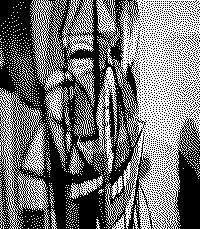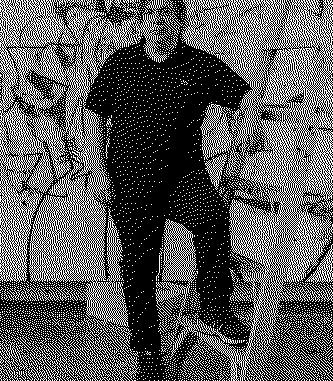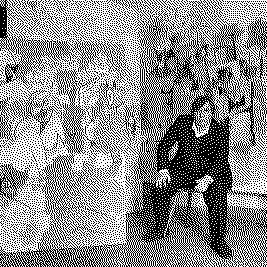Artists/George Condo
Fast Facts
Figurative and Abstract Elements
Condo's work often combines elements of figuration and abstraction. He is known for creating complex, distorted characters and faces that merge traditional portraiture with surreal, abstract forms.
Artificial Realism
He coined the term "Artificial Realism" to describe his style, which he defines as the realistic representation of that which is artificial. This concept involves blending aspects of European Old Master painting with a pop sensibility.
Influence of Old Masters and Pop Art
His work reflects a range of influences, from European Old Masters like Velázquez and Picasso to American Pop artists. This eclectic mix gives his work a unique visual language.
Psychological Exploration
Condo’s paintings often explore psychological dimensions, with characters that display a range of emotions and states of mind. His work is noted for its emotional intensity and often grotesque or comic qualities.
Diverse Artistic Techniques
Besides painting, Condo has worked in sculpture, drawing, and printmaking, showcasing a wide range of techniques and materials.
Biography



George Condo, born in 1957, is a prominent American visual artist known for his innovative work across painting, drawing, sculpture, and printmaking
His artistic journey is marked by a distinctive blend of figuration and abstraction, drawing influences from Old Master portraiture as well as modern artists like Pablo Picasso, Joan Miró, Willem de Kooning, and Jean-Baptiste Simeon Chardin. Condo's unique style, which he describes as "Psychological Cubism," is characterized by the depiction of archetypal human figures in grotesque, humorous settings.
During the mid-1980s to mid-1990s, Condo split his time between Paris and New York, engaging in extensive exhibitions across the United States and Europe. His time in Paris was particularly fruitful, leading to collaborations with literary figures such as William S. Burroughs and interactions with notable personalities like the philosopher Félix Guattari. Condo's work received praise from Guattari for its ability to challenge the viewer's access to stable meanings through the systematic destruction of pictorial structure (Wikipedia).
Condo's influence extends beyond the visual arts. His contributions include album covers for musicians like Kanye West and designs for fashion items, such as a painted Hermès Birkin Bag. Notably, his collaboration with West for the album "My Beautiful Dark Twisted Fantasy" featured a series of paintings that gained widespread attention (Wikipedia).
His exhibitions have been diverse and global, ranging from solo shows in prominent galleries across Europe and the USA to participating in major group exhibitions like the Venice Biennale. Noteworthy exhibitions include "George Condo: One Hundred Women" co-organized by the Museum der Moderne Salzburg and Kunsthalle Bielefeld in 2005, and a mid-career retrospective, "Mental States," that began at the New Museum in New York City in 2011 and traveled to several other prestigious institutions (Wikipedia) (Almine Rech).
Condo's work is part of the permanent collections of major New York museums, including the Museum of Modern Art, the Whitney Museum, and the Metropolitan Museum of Art, as well as other significant American and European collections (Wikipedia). His innovative approach and contributions to contemporary art have cemented his position as a significant figure in the art world.
Bodies of Work
-

Early Work
-

Collage Paintings
-

Music Covers
-

Existential Portraits
-

Clowns
-

Businessmen
-

Bartenders
-

Superheroes
-

Christ
2008
-

Smokers
-

Queen of England
-

Artificial Realism
-

Early Psychological Cubism Works
2009–2010
-

Drawings Paintings
2009–2010
-

Compressions
2011
-

My Dark Beautiful Twisted Fantasy Album Art
-

Toy Heads
2012
-

Geometric Portraits
-

Expanded Portrait Compositions
-

Altered States
-

Double Heads
-

Monumental Geometric Portraits
-

Ink Drawings
-

Color Grid Portraits
2017
-

Large Works on Paper
-

Franchise Album Art
2020
-

Bronze Head sculptures
Importance
George Condo's significance in the contemporary art world is profound and multifaceted, mirroring his extensive body of work that traverses painting, drawing, and sculpture.
Innovator of Psychological Cubism
Condo introduced a unique art style known as "Psychological Cubism," where he combines traditional portraiture with disparate emotional and psychological states within a single canvas. This approach has allowed him to explore the complexity of human psychology in a visually compelling manner, distinguishing his work within the realm of contemporary art (The Art Story).
Blending of High and Low Culture
Condo is celebrated for his ability to blend elements of high culture (classical portraiture and art history) with low culture (cartoon characters and pop imagery). This blend challenges traditional distinctions between 'noble' and 'popular' art forms, making his work a critical part of discussions about the value and meaning of art in modern society (The Art Story) (Xavier Hufkens).
Collaborations Across Disciplines
His collaborations, notably with Kanye West for the album cover of "My Beautiful Dark Twisted Fantasy," illustrate Condo's influence beyond the visual arts into popular culture. These collaborations have not only expanded his audience but also highlighted the potential for cross-disciplinary creativity between visual art and music (Art in Context).
Contributions to Artistic Discourse
Condo's work, rich in art historical references and innovative in its execution, contributes significantly to ongoing discourses in contemporary art. By repurposing and recombining preexisting styles, he provides commentary on the nature of creativity and originality in the postmodern world (The Art Story).
Exhibitions and Collections
His art is showcased in major exhibitions around the world and is part of prestigious collections, signifying the art world's recognition of his contributions. The inclusion of his work in prominent museums and galleries underscores his status as a significant contemporary artist (The Art Story) (Art in Context).
Educational Contributions
Through lectures and as a visiting lecturer, Condo has influenced the next generation of artists. His engagements at institutions like Harvard University and Columbia University reflect his role in shaping contemporary art education and discourse (Art in Context).
Technique
George Condo's art technique is distinguished by its innovative integration of historical styles and modern themes, creating a unique visual language that has made a significant impact on contemporary art.
Integration of Historical Styles
Condo’s work is notable for its allusion to various historical painting styles, unapologetically referencing masters such as Pablo Picasso, Paul Cézanne, Jean-Baptiste-Siméon Chardin, and Willem de Kooning. He believes that the essence of painting today lies not in the invention of new styles but in the ability to reconfigure and retool existing styles to appeal to contemporary audiences in intriguing ways. This technique differs from collage, as it retains a unified painting surface rather than assembling images from disparate sources (The Broad).
Artificial Realism
Condo has developed a concept known as "Artificial Realism," defined as the realistic representation of artificial constructs. This philosophy underpins his creation of an array of fictional characters, whose exaggerated features and expressions mirror human nature's complexities. These characters are depicted in various emotional states, rendered with expressive brushstrokes that recall the techniques of Impressionist masters like Claude Monet, thereby evoking a sense of immediacy and psychological depth (Sothebys.com).
Psychological Portraiture
Often characterized as portraits, Condo's works challenge and complicate traditional portraiture by exaggerating and distorting features to reveal deeper psychological truths. While employing the tropes of classical portraiture, Condo disrupts them to expose the inner psyche of his subjects, thereby engaging the viewer in a deeper exploration of human consciousness (Sothebys.com).
Hybridity and American Realism
Condo views his technique of creating hybrids—merging high art with popular or kitsch aesthetics—as reflective of American thinking. His experience at Andy Warhol’s Factory influenced his seamless blending of artistic references, moving beyond simple appropriation to create works that are both original and deeply resonant with cultural commentary. This approach has led to a dynamic collection of works that are rich in psychological and aesthetic complexity (Sothebys.com).
Complex Visual Constructions
In works like "Central Park," Condo employs a multi-layered approach, integrating full-faced figures, deconstructed perspectives, and a blend of figuration with abstract elements. This complexity questions the nature of the image itself, oscillating between creation and deconstruction, and showcases Condo's innovative use of image-making within a fragmented and multifaceted contemporary context (The Broad).





